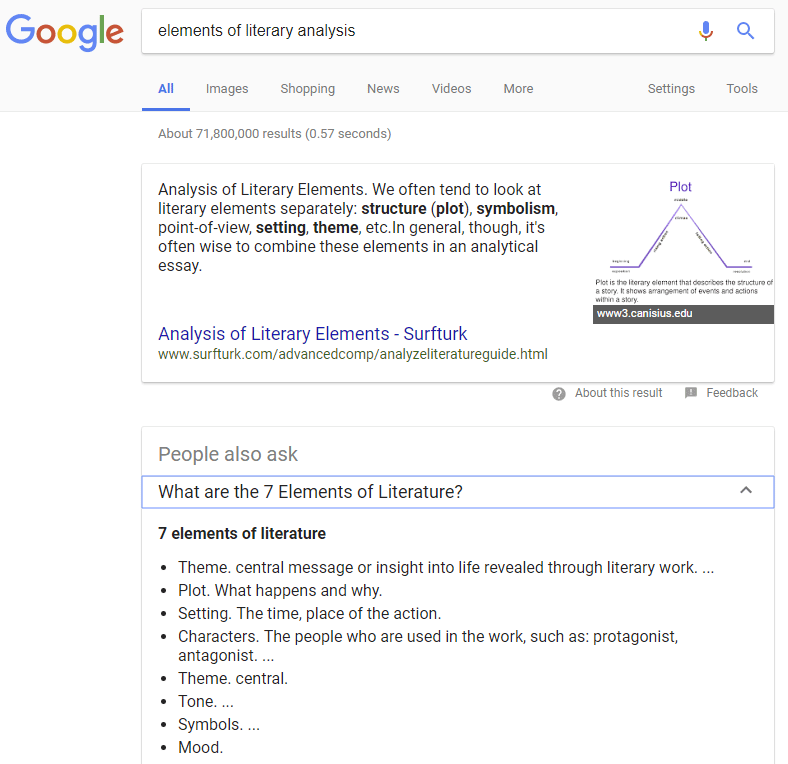When Google’s search results look like this, content creators, web searchers, and Google all win.
When they look like this (or this, or this, or this), it’s mostly just Google and searchers who benefit.
Content creators? Not so much. Some clicks might still flow through to the folks who created the content Google’s scraping and re-publishing (ironically enough, something that Google’s own webmaster guidelines discourage), but in millions of cases, Google is using information they scrape from your sites to answer the query before any click can happen (and before any value can accrue to the work’s creator).
How bad has it gotten? How many searches is Google answering right in the results, preventing anyone but the search giant themselves from benefiting? Thanks to new data from the team at Jumpshot (and a few hours in Excel), we’ve got the answers. It’s not pretty and it’s getting worse, but I was cynically expecting even more dramatic drops in available clicks.
In the last two and a half years, mobile “no-click” (or “zero click”) searches have grown 11%. Desktop no-click searches have grown 9.5%. That’s less steep than it could be, especially considering how aggressive Google’s become with their rich results and attempts to answer queries prior to anyone leaving the search engine. Search marketers should, in my opinion, breathe a sigh of relief at the relatively slow growth of no-click searches. It’s bad, it’s getting worse, but it’s not yet cannibalized so much as to make anyone in SEO or paid search worry about their jobs.
Below is a breakdown of organic clicks, paid clicks, and no-click searches per 100 searches on mobile devices over the last eleven quarters:
And here’s that same data on desktop and laptop devices:
Google began rolling out and growing their 4 ads above the search results in Q1 of 2016, and by Q3 of that year, it was commonplace. Over the next two years, Google’s made ads more subtle, switching from the yellow block, bold advertising indicators to the nearly-invisible current version where the ad indicator’s designed to blend in with the URL :
And they’ve added loads of new kinds of rich image, video, visual, and interactive ads as well. The numbers show us that while Google has indeed increased paid ad CTR (by ~44% on desktop and a whopping ~125% on mobile), the effect on organic CTR is light compared to the no-click searches phenomenon.
For every 100 searches on Google mobile in September, 2018, there were:
- 38.5 clicks on an organic result
- 3.4 clicks on a paid result
- 61.5 no-click searches
For every 100 searches on Google desktop in September, 2018, there were:
- 65.6 clicks on an organic result
- 3.7 clicks on a paid result
- 34.3 no-click searches
Looking at the month-by-month numbers, we can see some bouncing around, alongside three clear trends:
- No-click searches are growing steadily
- Google keeps needing to innovate and change how ads are displayed to grow and maintain paid CTR
- Organic CTR, while still 10X bigger than paid on mobile and nearly 20X on desktop, is inexorably trending down
Given these trends, what’s a savvy search marketer to do? In my opinion, it’s a few things:
- Invest in On-SERP SEO – the practice of growing the influence you/your brand has in the search results themselves, even when you’re not drawing a click
- Prioritize keywords that have high CTR by using the CTR metrics from Keyword Explorer (or other, similar tools)
- When Google attempts to answer queries in the SERPs with featured snippets or scraped answers, optimize to win those positions, and then provide a strong reason for searchers to click through to your site (by providing some, but not all of the information, or by offering a compelling hook to what else you provide)
- Use other channels – brand, social, content, press+PR, community building, etc – to grow your branded search demand and brand recognition (so searchers will query for your name rather than a generic keyword and will be more likely to click on you when they see you in the SERP)
- Target search queries and create content that serves searchers who need to do deeper research vs. those who are satisfied by a brief answer or a simple bullet list
The bad news is that classic, earn-the-organic-click SEO is shrinking in opportunity. The good news is that search continues to grow and create new, different kinds of opportunities. It sucks that we’re living in a Google-takes-most world, but at least Google, unlike Facebook, Twitter, LinkedIn, Instagram, Reddit, and other popular online platforms, is still sending traffic out.
Want to use the graphs/data above? Feel free to embed anywhere, but please give link credit back to this post.
p.s. One very important note — the data I’ve shown in this post is different than what I’ve had in past blog posts and presentations. That’s because Jumpshot has refined and improved their models, which updated the historical CTR and no-click search numbers. These are the most up-to-date and best numbers we’ve got right now, and while I recognize it’s frustrating to have history updated (even a few & points in a direction), this is just how data sampling and estimation goes.







